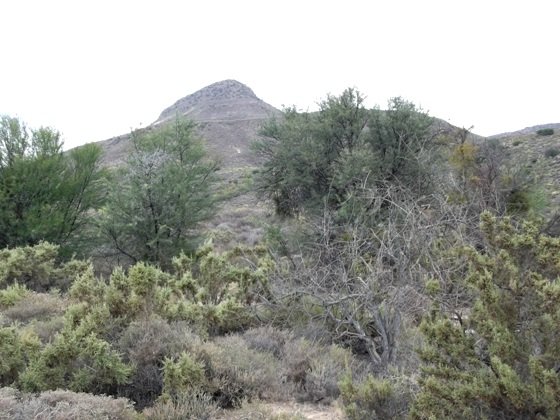Salsola aphylla in habitat

This landscape may look grey and bereft of moisture in summer. Winter usually dishes out a comfortable share of life-supporting rain over these southern Cape hills between Stormsvlei and McGregor. The land resembles the Little Karoo that lies well to the north east.
The shrubs in the foreground with the whitish tips are Salsola aphylla, enjoying a prosperous life here. As do the sweet-thorn trees, Vachellia karroo, sharing the space with a multitude of low growing species. Many shrublets, bulbs and succulents venture higher up these slopes, into more hardship than these two comfort seekers have to contend with down in the valley. All the land is used: plants produce surplus seeds to avail themselves of every possibility. The chance to live is taken by all species wherever it presents itself. This is the inevitability for seeds falling on the rock! The struggle is to the limit. Everywhere. Every time.
S. aphylla grows in the deeper soil close to or inside the seasonal watercourses of the arid interior. The tiny succulent leaves serve to conserve moisture for dry times, should the roots find none in their search deep underground.
Note the spelling difference of Karoo above. The current, conventional form says this harsh, beloved land is the Karoo. The alternative, Karroo, also exists (or existed). Sweet thorn trees were formally named when the Karroo form was in vogue. This name has therefore to be retained, just as the spelling error in the name of a parent is often retained when registering the name of the child. Official name changes are difficult as they should be.

